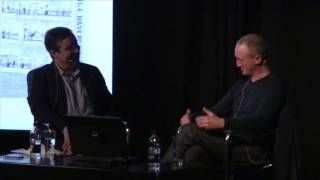Currently Reading: Harriet Hawkins – Visions of Excess: Michael Landy’s Break Down and the work of Georges Bataille. Published in Angelaki: Journal of Theoretical Humanities, October 2010
Hawkins talks about Landy’s work Break Down as “unbuildings” and compares to Bataille’s writings, particularly Visions of Excess in which, “excess […] is both necessary and importantly generative.” “For Bataille,” Hawkins explains, “excess is anything that is unproductive in a capitalist means-end economy.” p.20
“Excess is cursed by a production-orientated society because it will never be productive. It sits alongside waste, the formless (l’imforme) and base materialism – “a materialism that implied no ontology” – Bataille, Visions of Excess, p.50-51).” p.20
“Bataille’s heterodoxical operations of formlessness, excess and base materialism are, like the projects of deconstruction they at times seem to herald, performative.” p.20
Exemplifying Bataille’s notion of waste and drawing analogy to Landy’s unbuildings, Hawkins cites Bataille interrupting his object writings with; “Now I place a large glass of alcohol on my table.” and quantifies; “ As a wasteful expenditure of time this unproductive but hugely enjoyable interlude is the radical and destructive negative of the productivity previously found in the objects. […] This “waste” can be understood as unbuildings; acts which are at once destructive and also generative.” p.21
Applying Bataille’s philosophy to Break Down, Hawkins notes the following:
“In a Bataillean movement Landy’s embrace of what is usually “rejected of shunted beneath” – rubbish, waste – becomes understood as means through which to constitute an understanding of oneself and one’s relation to objects.” p.21
“Rubbish here disorders, and in so doing points to the understandings and orderings of objects, commodities, subjects and objects as an ongoing, uncertain process rather than the things themselves.” p.22
“Landy’s remains, shredded plastic, metal and paper arrayed in plastic bins, reflect Bataille’s description of the formless, they “resemble nothing especially not that which they ought” (Visions of Excess).” p.25
Finally, two especially poignant quotes:
“(The) assertion of object birth and object death being something that, as has often been noted in other contexts, is often kept separable from commodity form.” p.26
Citing Rom Harré, “Nothing happens or exists in this social world unless it is framed by human performative activity.” p.29








